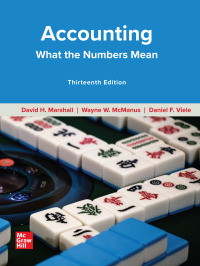
Cloud 9 - Continuing Case W&S Partners use the following percentages as starting points for the various benchmarks: W&S Partners has just won the January 31, 2023, audit for Cloud 9. The audit team assigned to this client is: Threshold (%) Benchmark Partner, Jo Wadley Audit manager, Sharon Gallagher Income before tax 5.0 Total revenue 0.5 Gross profit 2.0 Audit senior, Josh Thomas Total assets 0.5 IT audit manager, Mark Batten Equity 1.0 Experienced staff, Suzie Pickering First-year staff, Ian Harper These starting points can be increased or decreased by taking into account qualitative client factors, which could be: The nature of the client's business and industry (for example, rapidly changing, either through growth or downsizing, or an unstable environment). As a part of the risk assessment phase for the new audit, the audit team needs to gain an understanding of Cloud 9's structure and its business environment, determine materiality, and assess Whether the client is a public company (or subsidiary of) subject to regulations. the risk of material misstatement. This will assist the team in de- veloping an audit strategy and designing the nature, extent, and timing of audit procedures. One task during the planning phase is to consider the con- cept of materiality as it applies to the client. Auditors will de- sign procedures to identify and correct errors or irregularities that would have a material effect on the financial statements The knowledge of or high risk of fraud. Typically, income before tax is used; however, it cannot be used if reporting a loss for the year or if profitability is not consistent. When calculating PM based on interim figures, it may be nec- essary to annualize the results. This allows the auditors to plan the audit properly based on an approximate projected year-end balance. Then, at year-end, the figure is adjusted, if necessary, to and affect the decision-making of the users of the financial statements. Materiality is used in determining audit procedures and sample selections, and evaluating differences from client records to audit results. Materiality is the maximum amount of misstatement, individually or in aggregate, that can be accepted in the financial statements. In selecting the benchmark to be used to calculate materiality, the auditors should consider the key drivers of the business. They should ask, What are the end users (that is, stockholders, banks, etc.) of the accounts going to be looking at?" For example, will stockholders be interested in profit figures that can be used to pay dividends and increase share price? W&S Partners' audit methodology dictates that one plan- ning materiality (PM) amount is to be used for the financial statements as a whole. The benchmark selected for determin- ing materiality is the one determined to be the key driver of the reflect the actual results. Required Answer the following questions based on the information pre- sented for Cloud 9 in the appendix to this text and in the current chapter and previous chapters. a. Using the October 31, 2022, trial balance (in the appendix to this text), calculate planning materiality and include the justification for the benchmark that you have used for your calculation. b. Discuss how the planning materiality would be used to deter- mine performance materiality. c. If the planning materiality amount is subsequently increased or







